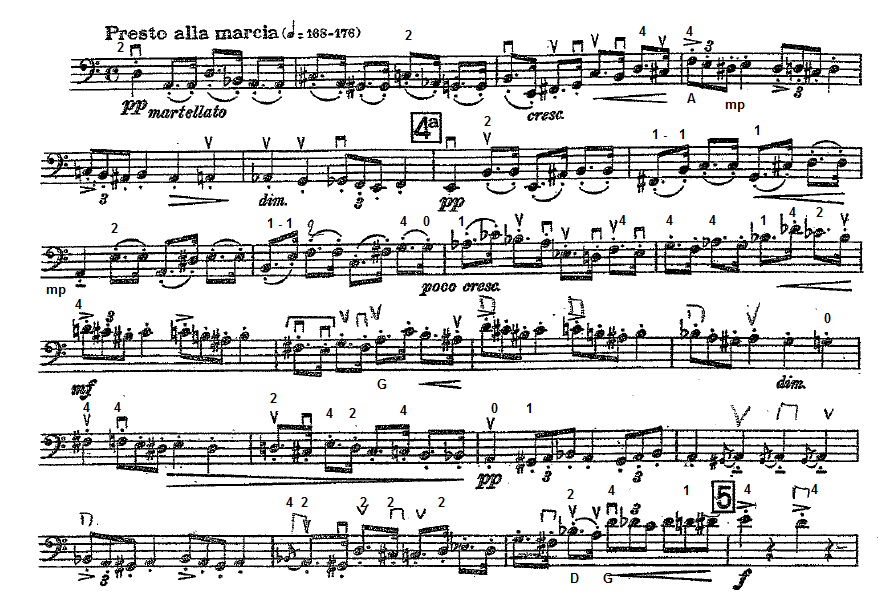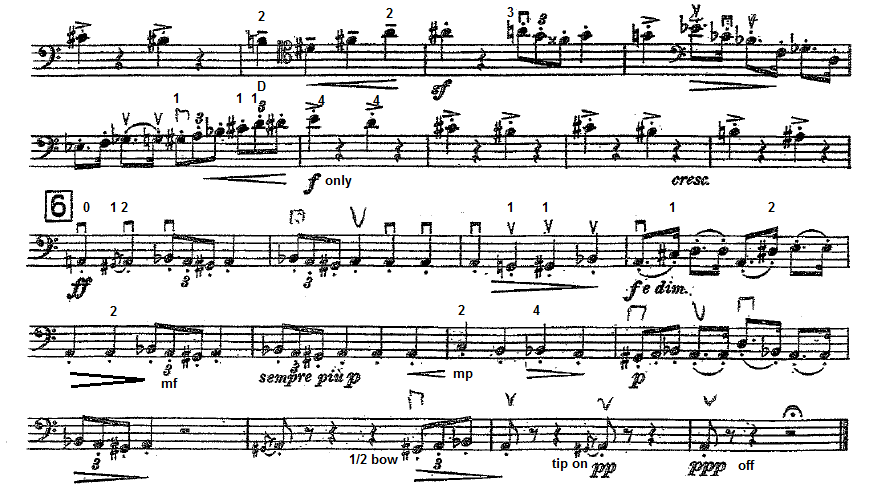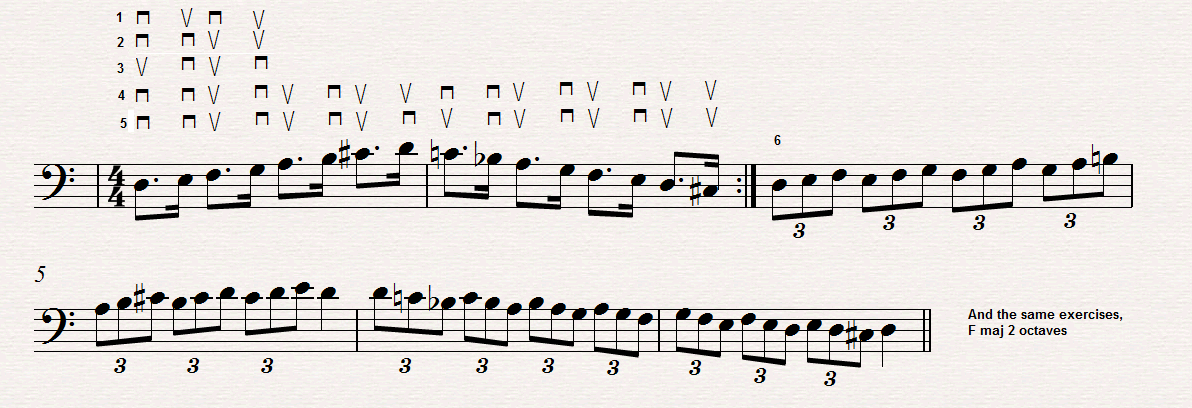Britten - March from frank bridge variations


Musical setting
Britten wrote beautifully for strings, especially the bass. He benefitted
by having some of the top players in the world at the time working in his
orchestra, including Adrian Beers. My favourite four pieces for string ensemble
are the Serenade for Tenor, Horn and strings, Nocturnes, Les Illuminations and
the Frank Bridge Variations. The bass is for the most part independent of the
cello, and therefore important. This excerpt crops up in the UK, less so abroad,
although I know Orchestra Victoria have set it in Melbourne. I played it in
auditions for Scottish Chamber Orchestra in 2011 and Northern Sinfonia in 2012.
My
YouTube
version is available by clicking the link
The main issues with this passage are:-
Articulation – Britten put a lot of detail on this page of music. There
are very few notes that do not have a dot, accent of sf marking, and those that
do not are probably typos, they should have something. There is only 1 sf in the
piece, the 4th bar of fig 5, and this needs to be noticed, as this is
the sort of detail that audition panels will be looking for.
Dynamic range – its massive, starting pp, rising to ff at fig 6 then
falling to ppp at the end. As with most cresendi, its easy to get too loud to
soon, for example the f at fig 5 and 4 bars before fig 6 should be “only” f, as
we need to make the ff at fig 6. The passage from 5 before fig 5 is easy to make
a cresc, as we can see the f at 5 in the corner of our eye – this must be
resisted, as the cresc is only in the last two beats before 5, ie very quick.
Rhythm – dotted rhythms and triplets are often a banana skin. It is easy
to rush the triplets and to make the dotted pair tripletty by playing the semi
quaver to soon. Also the bowing is tricky, see below. In a number of places the
dotted notes come up against triplets, with a change of bowing thrown in – these
are:-
Bar 3 into 4
The 6th and 7th of fig 4a
8th and 9th of fig 4a
11th and 12th of fig 4a
A bar before fig 5
These passages need attention with a metronome.
Bowing – is bloody awkward! It is a mini Sevcik on one page. There are a
range of articulations and rhythms, and probably the greatest challenge is
changing quickly from one to another, and keep the dynamics, and articulation,
get the notes and rhythm. I have created some RH exercises to help prepare this
passage, see fig 1 below:-
1 is a warm up, it doesn’t appear in the excerpt, this bowing would be far too
easy
2 the hooked bowing pattern appears in the first two bars and elsewhere
3 the bowing pattern that Keith Hartley calls “shoe shine”! We see this in bars
3, 5 after 4a (for two bars), 8 after 4a etc
4 transition bowing, from hooked to shoe shine and back – as per bar 3
5 longer transition bowing, from hooked to shoe shine and back – as per 5 after
4a
6 triplets

I practice the passage as follows:-
a.
Do the exercises in Fig 1
b.
Work on bowings in context, without triplets (ie play only the first of the
following triplet) – the passages to work on are bar 3, 5 and 6 after fig 4a, 8
after fig 4a, the two bars before fig 5, 6 bars after fig 5
c.
Same as b above, but add in the triplet bar, focus on getting the bowing right
and the correct rhythm on the triplets
d.
Split the passage into sections and play in context – my sections are start to
4a, 4a for 6 bars, 7 to 12 after 4a, 12 after 4a to fig 5, fig 5 to fig 6, fig 6
to end. Work on each one until fixed, then move onto the next one
e.
Play the whole passage in context
Practice the transition bars, which I have circled in my part
Rhythm, bowing, range of articulations, massive dynamic range, tricky LH
(covering 2 and half 8ves)
Extension closed
Dotted (short semi), triplets spaced, make sure the semi doesn’t not
become tripletty
Check the transition bars